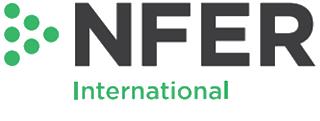About PIRLS
What is involved in PIRLS?
PIRLS gathers information from two sources: the assessment and the questionnaires.
- Pupils complete a single test booklet containing questions assessing their reading skills.
- In order to contextualise the results, pupils also answer a short questionnaire about themselves and their schools.
- Principals and class teachers each receive a questionnaire to provide important background information to help better understand what makes successful learners.
- The study also includes a questionnaire for parents in order to gain information about pupils' home learning environments.
- PIRLS 2021 included questions relating to the Covid-19 pandemic in the school and parent questionnaires as well as the teacher questionnaire (for Northern Ireland).
What does PIRLS measure?
The PIRLS assessments are designed to reflect the skills children need when reading for different purposes and to explore the different processes they use as they try to understand what they read.
PIRLS focuses on two main purposes for reading:
- reading for literary experience
- reading to acquire and use information.
It also examines four main comprehension processes of reading. These are the abilities to:
- focus on and retrieve information explicitly stated in text
- make straightforward inferences from a text, understanding parts of a text that are not stated
- interpret and integrate ideas and information
- evaluate and critique content, language and features of texts.
More information is available in the PIRLS 2021 Assessment framework.
Who conducted the PIRLS 2021 study in Northern Ireland?
PIRLS was delivered in Northern Ireland by the National Foundation for Educational Research (NFER) on behalf of the Department of Education. NFER also delivered the 2011 and 2016 cycles in Northern Ireland.
PIRLS 2021 was the third time Northern Ireland have participated in the study.
Was the PIRLS 2021 administration impacted by the Covid-19 pandemic?
Many schools worldwide faced considerable disruption to their operations during the Covid-19 pandemic. It was necessary for some countries to delay their testing periods, either by around six months (in 14 countries) or by a year (in six countries).
This was the case in Northern Ireland, where the data collection period was delayed from May/June to September/October. It meant pupils were four to five months older than in PIRLS 2016 and 2011.
The timeline below, which is unique to this cycle, provides more details:
- October to December 2020 – pupils from two Southern Hemisphere countries took part in the PIRLS 2021 study.
- From January 2021 – schools in Northern Ireland that had been selected to participate in the study were contacted by NFER.
- February 2021 – The Minister of Education and Department of Education made the decision to delay PIRLS in Northern Ireland to avoid any further burden on participating schools at an already difficult time.
- From February to July 2021 – pupils from 35 countries in the Northern Hemisphere took part in PIRLS.
- Between August and December 2021 – pupils from three Southern Hemisphere countries took part in PIRLS.
- September and October 2021 – pupils at the beginning of Year 7 in Northern Ireland took part in the PIRLS 2021 study. Thirteen other countries from the Northern Hemisphere and three Southern Hemisphere countries took part between August and December 2021.
- Between April and July 2022 – pupils from three countries in the Northern Hemisphere took part in PIRLS.
- From January 2022 to April 2023 – international researchers collated and analysed the data from all participating countries and prepared reports on the results
- May 2023 – the IEA published the International report about all countries. The national report for Northern Ireland was written by NFER and published by the Department of Education.
NFER Quality Assurance
For PIRLS results to be comparable across different countries, it is really important that strict international standards are met. These relate to how participating schools are selected, how the tests and questionnaires are translated and how they are administered in schools. All modern international surveys are conducted to high standards of quality control and quality assurance and procedures are closely scrutinised by international referees.
